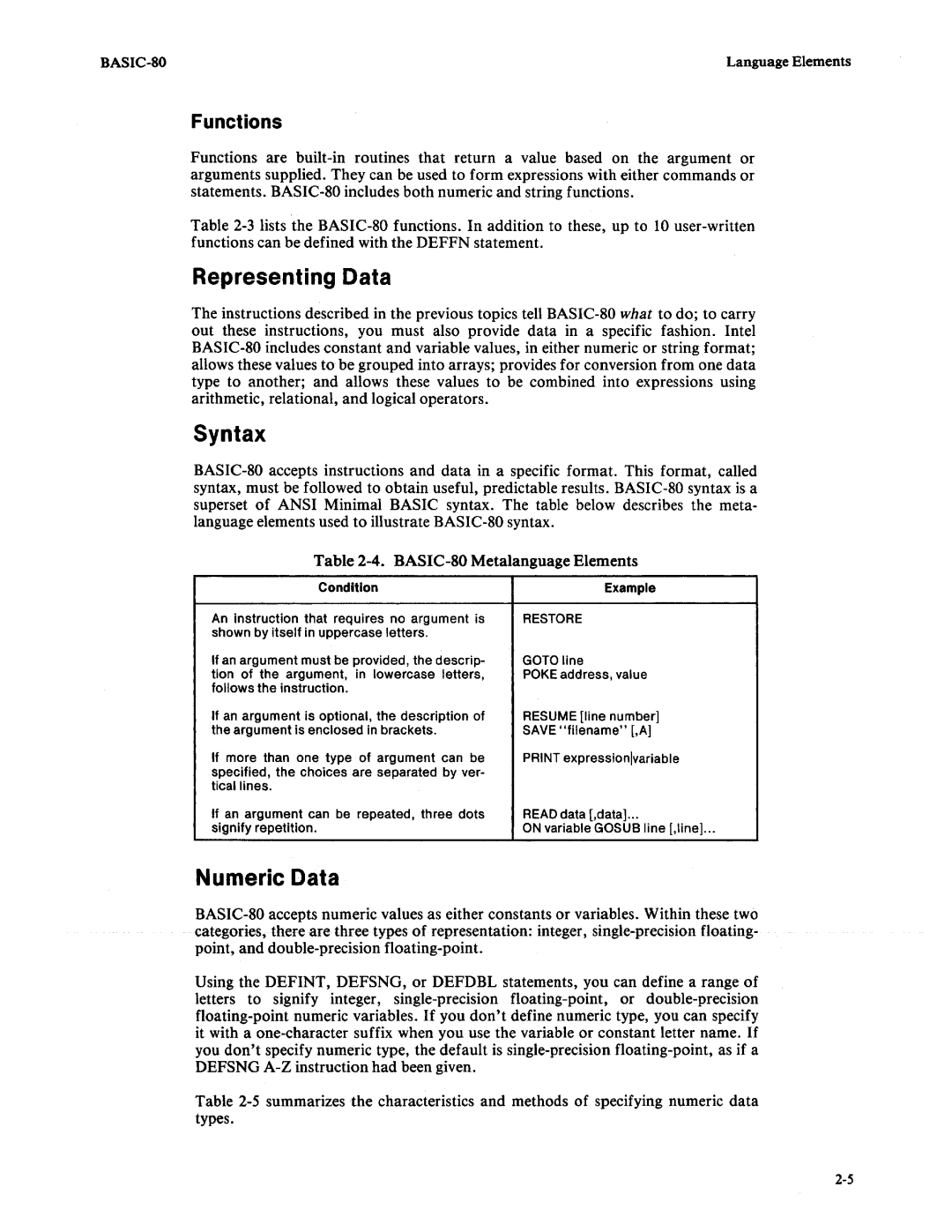Functions
Functions are built-in routines that return a value based on the argument or arguments supplied. They can be used to form expressions with either commands or statements. BASIC-SO includes both numeric and string functions.
Table 2-3 lists the BASIC-SO functions. In addition to these, up to 10 user-written functions can be defined with the DEFFN statement.
Representing Data
The instructions described in the previous topics tell BASIC-80 what to do; to carry out these instructions, you must also provide data in a specific fashion. Intel BASIC-80 includes constant and variable values, in either numeric or string format; allows these values to be grouped into arrays; provides for conversion from one data type to another; and allows these values to be combined into expressions using arithmetic, relational, and logical operators.
Syntax
BASIC-SO accepts instructions and data in a specific format. This format, called syntax, must be followed to obtain useful, predictable results. BASIC-SO syntax is a superset of ANSI Minimal BASIC syntax. The table below describes the meta- language elements used to illustrate BASIC-80 syntax.
Table 2-4. BASIC-80 Metalanguage Elements
Condition | Example |
| |
An instruction that requires no argument is | RESTORE |
shown by itself in uppercase letters. | |
If an argument must be provided, the descrip- | GOTOline |
tion of the argument, in lowercase letters, | POKE address, value |
follows the instruction. | |
If an argument is optional, the description of | RESUME [line number] |
the argument is enclosed in brackets. | SAVE "filename" [,A] |
If more than one type of argument can be | PRINT expressionlvariable |
specified, the choices are separated by ver- | |
tical lines. | |
If an argument can be repeated, three dots | READ data [,data] ... |
signify repetition. | ON variable GOSUB line [,line] ... |
| |
Numeric Data
BASIC-SO accepts numeric values as either constants or variables. Within these two categories, there are three types of representation: integer, single-precision floating- point, and double-precision floating-point.
Using the DEFINT, DEFSNG, or DEFDBL statements, you can define a range of letters to signify integer, single-precision floating-point, or double-precision floating-point numeric variables. If you don't define numeric type, you can specify it with a one-character suffix when you use the variable or constant letter name. If you don't specify numeric type, the default is single-precision floating-point, as if a DEFSNG A-Z instruction had been given.
Table 2-5 summarizes the characteristics and methods of specifying numeric data types.

